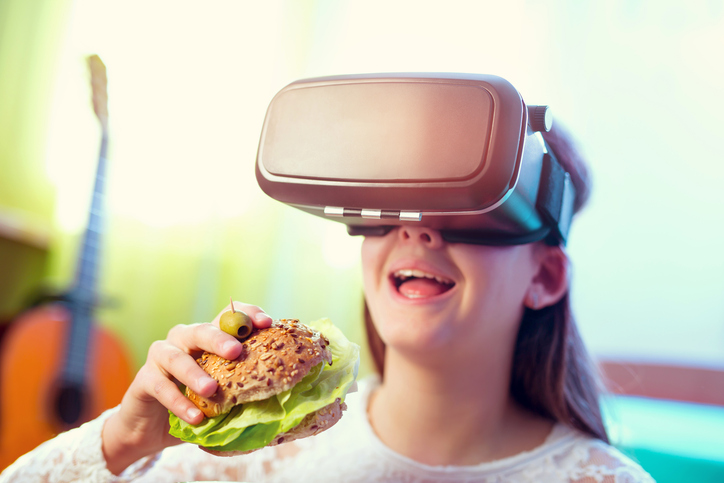Virtual Reality Makes Food Taste More Delicious
If you eat yakiniku in a famous restaurant in Japan with views of Mt. Fuji, surely it will taste more delicious than eating the same yakiniku in a restaurant inside the Mall, right? The taste of food can be different only because of the environment. But what if the different environment is only virtual instead of real? A study from Cornell University shows that when we taste food for real, in the real world while drowning in the VR world it can change our perception of the taste of food.
Based on a study published in the Journal of Food Science earlier this year, Cornell News recently published a story stating that “Virtual reality can change feelings.” A team of four researchers came to this conclusion after about 50 panelists tried the same three samples with blue cheese when viewing three very different “360 degree videos”: “standard sensory booths” (virtually), “pleasant garden benches,” and Cornell cattle barns (yes, Cornell apparently has its own cow pen) .
As expected, the researchers found that the panelists, who did not realize that all the cheese was identical, judged that the aroma of cheese was much sharper when he saw the barn video. As a control, the team also had panelists who assessed saltiness in cheese, and these numbers did not change significantly in the three VR environments.
Robin Dando, a food science professor who served as a senior author of the paper, suggested that, while these findings might be fun and interesting, they could also have real life consequences for companies looking for cheaper types of food testing. “This research validates that virtual reality can be used, because it provides an immersive environment for testing,” he said. “Visually, virtual reality instills the quality of the environment itself for food consumed – making this kind of testing cost effective.”
Of course, that’s good for food brands, but what about those of us who only eat blue cheese – or believe me – at home? Although Cornell did not specifically discuss any personal applications, Dando stated, “When we eat, we not only feel the aroma and taste of food, we also get sensor inputs from our environment – eyes, ears, even our memories of the environment. “It sounds like it doesn’t hurt to play movies from Japan during dinner time at home.
To be clear, this research wasn’t designed to confirm whether virtual reality could make food taste better but whether or not VR could be used as a sort of taste testbed, allowing manufacturers to let people try foods in different places without, say, putting them on an airplane or inside a real cow barn. Because food tastes differently in different surroundings, the ability to simulate those surroundings in VR is very useful.
“This research validates that virtual reality can be used, as it provides an immersive environment for testing,” said Dando. “Visually, virtual reality imparts qualities of the environment itself to the food being consumed – making this kind of testing cost-efficient.”
–





